Fire is a useful thing, and without it, we can’t think of life on Earth. But, if it is not controlled well, it can have a devastating impact on people’s lives. Thus, a smoke detector or you call it a fire alarm is indeed a need of the household nowadays. So that, you get to know about a fire situation at the earliest and control it before it’s too late.
In this article, I will detail you on installing a smoke detector in your bedroom that has a ceiling fan. There are people who might have questions that where to install the smoke detector in their bedroom if there is a ceiling fan. The question arises because if it’s too near to the fan, it might not work effectively because at times fan’s rotation may interfere, and a little smoke may not reach the detector well.
Thus, it is important to know where to install the smoke detector so that your ceiling fan won’t interfere with smoke detection.
I am going explore the types of smoke alarms suitable for bedrooms, the potential interference with ceiling fans, optimal installation locations, recommended testing frequency, and the different types of smoke detectors available.
Contents
- 1 Why Do I Need To Install A Smoke Detector In My Bedroom?
- 2 What Type of Smoke Alarm Is Best for Bedrooms?
- 3 Does A Fan Interfere With The Operation Of The Smoke Detector?
- 4 Where Should I Install The Smoke Detector In My Bedroom?
- 5 How Often Should You Test Your Smoke Alarm?
- 6 What Kind Of Smoke Detector Should I Buy?
- 7 Conclusion
Why Do I Need To Install A Smoke Detector In My Bedroom?
The bedroom is vital for smoke detector placement due to the higher risk of fires originating in sleeping areas. Common causes of bedroom fires include electrical faults, overheating electronics, and improper use of heating devices or smoking materials. Given that people spend a significant amount of time sleeping, a smoke detector in the bedroom serves as an early warning system. This gives occupants enough time to react, evacuate, and contact emergency services before the situation escalates, potentially saving lives and minimizing property damage.
What Type of Smoke Alarm Is Best for Bedrooms?
When it comes to choosing the best smoke alarm for bedrooms, several types of smoke detectors are available in the market. Each type has its advantages and is designed to detect different types of fires. However, for bedrooms, the most recommended and effective option is the photoelectric smoke alarm. Below is a list of smoke alarms commonly used in homes, along with an explanation of each type:
Photoelectric Smoke Alarms: Photoelectric smoke alarms use a light source (usually an LED) and a light-sensitive sensor. When smoke particles enter the alarm chamber, they scatter the light, triggering the sensor to detect the presence of smoke. Photoelectric alarms are highly effective at detecting slow-smoldering fires, such as those caused by overheated wiring or smoldering bedding materials. They respond faster to smoldering fires than ionization smoke alarms, making them ideal for bedrooms.
Advantages:
-
-
- Excellent at detecting slow, smoldering fires.
- Less prone to false alarms from cooking fumes or steam.
- Suitable for bedrooms and living areas where slow-burning fires are more common.
-
Ionization Smoke Alarms: Ionization smoke alarms work by using a small amount of radioactive material to ionize the air inside the alarm chamber. When smoke particles enter the chamber, they disrupt the ionization process, triggering the alarm. Ionization alarms are effective at detecting fast-flaming fires, such as those caused by burning paper or flammable liquids.
Advantages:
-
-
- Quick response to fast-flaming fires.
- Generally less expensive than photoelectric smoke alarms.
- Suitable for areas where fast-burning fires are more likely, such as kitchens and garages.
-
Dual-Sensor Smoke Alarms: Dual-sensor smoke alarms combine both photoelectric and ionization technologies in a single unit. These alarms offer comprehensive fire detection, as they can detect both slow-smoldering and fast-flaming fires. While they provide broad coverage, they are often more expensive than single-sensor smoke alarms.
Advantages:
-
-
- Comprehensive detection of both types of fires.
- Reduced risk of false alarms.
-
Smart Smoke Alarms: Smart smoke alarms are integrated with wireless technology, allowing them to communicate with other smart devices and send alerts to smartphones or tablets. Some smart alarms can even differentiate between types of smoke and provide more detailed information in case of an incident.
Advantages:
-
-
- Remote monitoring and notifications through smartphone apps.
- Some models can provide additional safety features, like carbon monoxide detection.
- Can be integrated into a smart home system for enhanced automation.
-
Does A Fan Interfere With The Operation Of The Smoke Detector?
The proper functioning of a smoke detector is critical for the early detection of smoke and potential fires. However, in rooms with ceiling fans, there may be concerns about whether the fan’s operation can interfere with the smoke detector’s effectiveness. Here I am exploring different situations where a fan can potentially interfere with a smoke detector and when it won’t:
Interference Scenarios:
- Smoke Dilution: One potential concern is that a ceiling fan could dilute smoke particles in the air, making it harder for the smoke detector to sense smoke effectively. When a fan is running, it can circulate air and create air currents, which might disperse the smoke particles before they reach the smoke detector’s sensors. As a result, the smoke detector may take longer to detect the presence of smoke or may not trigger an alarm at all. And, this way, it would be too later to control the fire.
- Fan Placement: The positioning of the smoke detector in relation to the ceiling fan is crucial. If the smoke detector is installed too close to the fan, the air currents produced by the fan may interfere with the detector’s ability to detect smoke accurately. In such cases, the smoke detector may generate false alarms or fail to detect smoke altogether.
- Fan Motor Emissions: Some older or poorly designed ceiling fans may emit small amounts of smoke or particles from their motors during operation. Although this emission is usually negligible and not harmful, it could potentially lead to false alarms in smoke detectors with sensitive sensors.
Non-Interference Scenarios:
- Proper Distance: When the smoke detector is installed at an appropriate distance from the ceiling fan, the fan’s operation is unlikely to interfere with the detector’s effectiveness. As a general rule, the smoke detector should be positioned at least 4 inches away from the fan to allow unobstructed airflow and optimal detection of smoke particles.
- Different Detection Mechanism: Smoke detectors operate based on specific detection mechanisms, such as photoelectric or ionization technology. Ceiling fans do not emit smoke or interfere with the actual detection process of the smoke detector, as they are designed solely to circulate air within the room.
- Smoke Rises: Smoke particles tend to rise in the air, seeking the highest point in the room. As a result, installing the smoke detector on the ceiling (away from the ceiling fan) is the best location for early detection, as smoke is more likely to accumulate near the ceiling.
Where Should I Install The Smoke Detector In My Bedroom?
Installing a smoke detector in the bedroom is crucial for early fire detection and the safety of the occupants. The proper placement of the smoke detector ensures optimal smoke detection and timely alerts in case of a fire. Let’s explore different scenarios for smoke detector placement in a bedroom, specifically addressing situations where there is a ceiling fan and when there is no ceiling fan:
When There Is a Ceiling Fan in the Room:
- Ceiling Mounting (Preferred): Ideally, the smoke detector should be installed on the ceiling, as close to the center of the room as possible. This positioning allows the smoke detector to quickly detect smoke that rises towards the ceiling. However, in rooms with ceiling fans, this direct ceiling mounting might not always be possible due to potential interference.
- High Wall Mounting: If the ceiling fan prohibits ceiling mounting, the next best location for the smoke detector is high on the wall, at least 4 inches below the ceiling. This placement still ensures that the smoke detector can effectively sense rising smoke and provide timely alerts in case of a fire.
- Distance from Ceiling Fan: Regardless of whether the smoke detector is mounted on the ceiling or the wall, it is crucial to position it at least 4 inches away from the ceiling fan. This distance allows unobstructed airflow around the smoke detector and reduces the risk of interference with the fan’s operation.
When There Is No Ceiling Fan in the Room:
- Ceiling Mounting: In bedrooms without ceiling fans, mounting the smoke detector on the ceiling remains the preferred location. This positioning provides the best coverage for detecting rising smoke and ensures early detection of potential fires.
- Center of the Room: When installing the smoke detector on the ceiling, try to position it as close to the center of the room as possible. This central location maximizes the smoke detector’s ability to detect smoke evenly throughout the room.
- Avoid Corners and Vents: To prevent potential dead air spots where smoke may not accumulate, avoid mounting the smoke detector too close to corners or vents. Placing the detector away from these areas ensures comprehensive coverage of the room.
Additional Scenarios:
- Large Bedroom: In a large bedroom, consider installing more than one smoke detector to provide comprehensive coverage. The detectors should be placed strategically to cover different areas of the room effectively.
- Interconnected Smoke Detectors: For enhanced safety, consider installing interconnected smoke detectors throughout your home. When one alarm is triggered, all interconnected alarms will sound, providing immediate alerts to occupants in different areas of the house.
How Often Should You Test Your Smoke Alarm?
It is crucial to test your smoke alarm regularly to ensure that it is functioning correctly. The NFPA recommends testing smoke detectors at least once a month to verify that the alarm sound is loud and distinct. Additionally, smoke detectors should undergo a comprehensive test by a qualified professional at least once a year. Regular maintenance and testing help ensure that the smoke detector remains operational and ready to provide early warning in case of a fire.
How to Test Your Smoke Alarm?
Testing your smoke alarm is a straightforward process:
- Press the Test Button: Most smoke alarms have a test button that you can press to initiate a self-test. Press and hold the test button for a few seconds until you hear the alarm sound.
- Verify Audibility: During the test, listen for the loud and distinct sound of the alarm. If the sound is weak or not audible, replace the batteries immediately and retest the alarm.
- Reactivate the Alarm: After testing, reactivate the smoke alarm by pressing any reset or silence button it may have.
What Kind Of Smoke Detector Should I Buy?
When selecting a smoke detector for your bedroom, opt for a reliable and certified photoelectric smoke alarm. Look for models that meet recognized safety standards, such as those approved by Underwriters Laboratories (UL) or other reputable testing organizations. Additionally, consider purchasing interconnected smoke detectors for your entire home, so that when one alarm is triggered, all interconnected alarms sound, providing an immediate alert to all occupants in different areas of the house.
Conclusion
Installing a smoke detector in your bedroom, particularly in rooms with ceiling fans, is a crucial step in ensuring the safety of your household. Photoelectric smoke detectors are highly effective at detecting slow-smoldering fires, which are common during nighttime hours when people are asleep. By placing the smoke detector away from the ceiling fan and testing it regularly, you can ensure that it operates optimally and provides timely alerts in case of a fire. Investing in the right smoke detector and adhering to proper placement and maintenance practices can significantly enhance your home’s fire safety measures and potentially save lives in the event of an emergency.

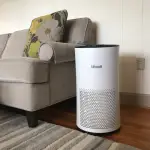
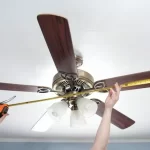
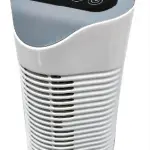
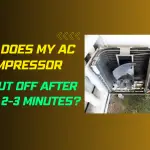
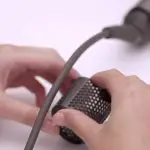

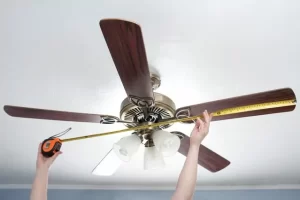
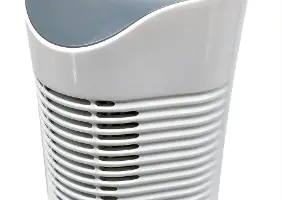
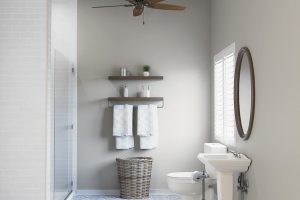
Add Comment